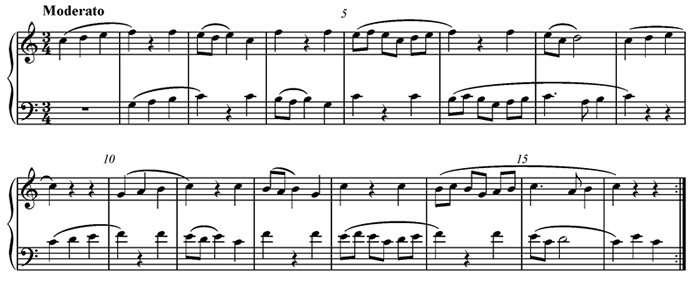Forms : The Canon
Here is an example of a very simple canon by the composer Konrad Max Kunz (Canons op. 14, no. 43). The melody played by the soprano is imitated by the bass. In bar 4, the bass stops imitating and the roles change as the soprano begins to imitate the bass:

The imitation can be at the unison, octave, or any other interval. In Kunz's Canon 134, the second voice begins a perfect fourth below. We say it is a canon at the fourth. As in the previous canon, the roles change in measure 10, and the canon becomes a canon at the fifth:

These are two-part canons, but canons can be 3 or more parts. Many other contrapuntal techniques such as inversion, retrograde motion, augmentation and diminution can be used in canons. Here are some examples:
